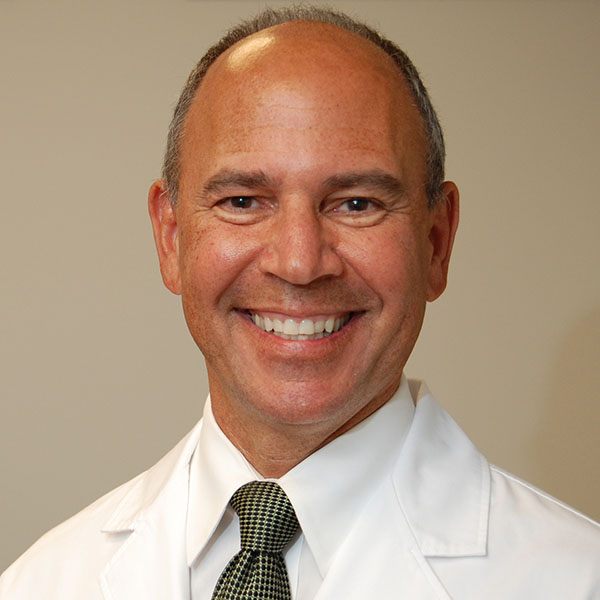
Moving from couch to 5K

Need a little motivation and structure to ramp up your walking routine? Want to wake up your workouts but not quite ready for a mud run? Consider trying a couch-to-5K program.
Dr. Adam Tenforde, medical director of the Spaulding National Running Center at Harvard-affiliated Spaulding Rehabilitation Network and a sports medicine physician at Mass General Brigham Sports Medicine, shares tips on what to know and do before lacing up your sneakers.
What is a couch-to-5K program?
These free or low-cost coaching plans are designed to help would-be runners train for a 5-kilometer race, which is about 3.1 miles. The programs are available online, or as apps or podcasts. They typically feature timed walking and running intervals that gradually phase out the walking over a period of about nine weeks.
Why try a couch-to-5K program?
“One purpose of a couch-to-5K program is to give you time to acclimate and start to enjoy the benefits of running and the sense of accomplishment of completing a distance safely,” says Dr. Tenforde. Running provides many cardiovascular benefits, such as lower blood pressure and a reduced cholesterol level, as well as an enhanced sense of well-being, he adds.
What’s more, adding even short bursts of running or other vigorous physical activity to a workout — a practice known as high-intensity interval training or HIIT — appears to help improve mental health, according to a study that pooled findings from 58 randomized trials of HIIT.
Are you ready to tackle a couch-to-5K?
Even though the couch-to-5K programs sound as though they’re geared for completely sedentary couch potatoes, that’s not necessarily true, Dr. Tenforde cautions. These programs often assume you can walk continuously for 30 minutes, which doesn’t apply to everyone.
For some people, an even easier, more gradual training regimen may be more appropriate. Also, keep in mind that you don’t have to run to do a 5K. Many of these races also encourage walkers to participate as well. You’ll still reap the other rewards from committing to a race, such as being more challenged and motivated — and possibly more connected to your community. Many charitable “fun runs” benefit local schools or needy families. Some are in memory of people affected by illness or tragedy. Visit Running in the USA to find 5K races near you.
What to do before you start
If you’re planning to walk or run your first 5K, get your doctor’s approval before you start training. That’s especially important if you have heart disease or are at risk for it.
Comfortable walking or running shoes are a wise investment. Shoes that are too old or too tight in the toe box can cause or aggravate a bunion, a bony bump at the outer base of the big toe. Despite suggestions that people with flat feet or high arches need specific types of shoes, studies have found that neutral shoes (designed for average feet) work well for almost everyone. Walk or jog around the store when you try them on to make sure they feel good and fit properly.
You don’t need to buy special clothes; regular sweat pants or comfortable shorts and a t-shirt will suffice. Women should consider getting a supportive sports bra, however.
Go slow and steady when training
- Always include a warm-up and cool-down — a few minutes of slow walking or jogging — with every exercise session.
- If you haven’t been exercising regularly, start by walking just five or 10 minutes a day, three days a week. Or, if you’re already a regular walker, add some short stints of jogging to each walking session.
- Gradually add minutes and days over the following four to six weeks.
- Once you’re up to 30 minutes a day, check how far you’re traveling. Keep increasing your distance every week until you reach 5 kilometers. Then slowly phase in more jogging and less walking over your route if you like.
Remember that you can always repeat a week. You’re less likely to sustain an injury if you make slow, steady progress. Pay close attention to your body and don’t push yourself too much, Dr. Tenforde advises. Former athletes who haven’t run in years may think they can pick up where they left off, but that’s not a smart move — they should also start low and go slow.
For a good couch-to-5K guide, try this beginner’s program from the United Kingdom’s National Health Service.
About the Author

Julie Corliss, Executive Editor, Harvard Heart Letter
Julie Corliss is the executive editor of the Harvard Heart Letter. Before working at Harvard, she was a medical writer and editor at HealthNews, a consumer newsletter affiliated with The New England Journal of Medicine. She … See Full Bio View all posts by Julie Corliss
About the Reviewer

Howard E. LeWine, MD, Chief Medical Editor, Harvard Health Publishing
Dr. Howard LeWine is a practicing internist at Brigham and Women’s Hospital in Boston, Chief Medical Editor at Harvard Health Publishing, and editor in chief of Harvard Men’s Health Watch. See Full Bio View all posts by Howard E. LeWine, MD

New urine test may help some men with elevated PSA avoid biopsy

When a prostate-specific antigen (PSA) blood test produces an abnormal result, the next step is usually a prostate biopsy. A biopsy can confirm or rule out a cancer diagnosis, but it also has certain drawbacks. Prostate biopsies are invasive procedures with potential side effects, and they often detect low-grade, slow-growing tumors that may not need immediate treatment — or any treatment at all.
Researchers are exploring various strategies for avoiding unnecessary biopsies. Specialized magnetic resonance imaging (MRI) scans, for instance, can be useful for predicting if a man’s tumor is likely to spread. A blood test called the Prostate Health Index (PHI) measures various forms of PSA, and can help doctors determine if a biopsy is needed.
In April, researchers at the University of Michigan published results with a test that screens for prostate cancer in urine samples. Called the MyProstateScore 2.0 (MPS2) test, it looks for 18 different genes associated with high-grade tumors. “If you’re negative on this test, it’s almost certain that you don’t have aggressive prostate cancer,” said Dr. Arul Chinnaiyan, a professor of pathology and urology at the University, in a press release.
Gathering data and further testing
To create the test, Dr. Chinnaiyan and his colleagues first turned to publicly-available databases containing over 58,000 prostate cancer-associated genes. From that initial pool, they narrowed down to 54 genes that are uniquely overexpressed in cancers classified as Grade Group 2 (GG2) or higher. The Grade Group system ranks prostate cancers from GG1 (the least dangerous) to GG5 (the most dangerous).
The team tested those 54 genes against archived urine samples from 761 men with elevated PSA who were scheduled for biopsy. This effort yielded 18 genes that consistently correlated with high-grade cancer in the biopsy specimens. These genes now make up MPS2.
Then the team validated the test by performing MPS2 testing on over 800 archived urine samples collected by a national prostate cancer research consortium. Other researchers affiliated with that consortium assessed the new urine test’s results against patient records.
Interpreting the results
Study findings showed that MPS2 correctly identified 95% of the GG2 prostate cancers and 99% of cancers that were GG3 or higher. Test accuracy was further improved by incorporating estimates of the prostate’s size (or volume, as it’s also called).
According to the team’s calculations, use of the MPS2 would have reduced unnecessary biopsies by 37%. If volume was included in the measure, then 41% of biopsies would have been avoided. By comparison, just 26% of biopsies would have been avoided with the PHI.
Dr. Chinnaiyan and his co-authors emphasize that ruling out high-grade cancer with a urine test offers some advantages over MRI. The specialized multi-parametric MRI scans needed to assess high-grade cancer in men with elevated PSA aren’t always available in community settings, for instance. Moreover, the interpretation of mpMRI results can vary from one radiologist to another. Importantly, the MPS2 can be updated over time as new prostate-cancer genes are identified.
Commentary
Dr. Boris Gershman, a urologist at Harvard-affiliated Beth Israel Deaconess Medical Center in Boston, and a member of the advisory and editorial board for the Harvard Medical School Guide to Prostate Diseases, described the new study results as promising. “It does appear that the performance of the 18-gene urine test is better than PSA alone,” he says.
But Dr. Gershman adds that it will be important to consider how such a test will fit into the current two-stage approach for PSA screening, which entails prostate MRI when the PSA is abnormal. Where MRI delivers a yes/no result (meaning lesions that look suspicious for cancer are either present or not), the MPS2 provides numerical risk estimates ranging between 0% and 100%. “The challenge with clinical implementation of a continuous risk score is where to draw the line for biopsy,” Dr. Gershman says.
“This research is very encouraging, since many men in rural areas may not have access to prostate MRI machines or the added sophistication that is needed in interpreting these MRI scans,” says Dr. Marc Garnick, the Gorman Brothers Professor of Medicine at Harvard Medical School and Beth Israel Deaconess Medical Center. “A widely available urine test may eventually help provide more precision in determining who should undergo a prostate biopsy, and may also help to assess the probability that a cancer is clinically significant and in need of treatment.”
About the Author

Charlie Schmidt, Editor, Harvard Medical School Annual Report on Prostate Diseases
Charlie Schmidt is an award-winning freelance science writer based in Portland, Maine. In addition to writing for Harvard Health Publishing, Charlie has written for Science magazine, the Journal of the National Cancer Institute, Environmental Health Perspectives, … See Full Bio View all posts by Charlie Schmidt
About the Reviewer

Marc B. Garnick, MD, Editor in Chief, Harvard Medical School Annual Report on Prostate Diseases; Editorial Advisory Board Member, Harvard Health Publishing
Dr. Marc B. Garnick is an internationally renowned expert in medical oncology and urologic cancer. A clinical professor of medicine at Harvard Medical School, he also maintains an active clinical practice at Beth Israel Deaconess Medical … See Full Bio View all posts by Marc B. Garnick, MD